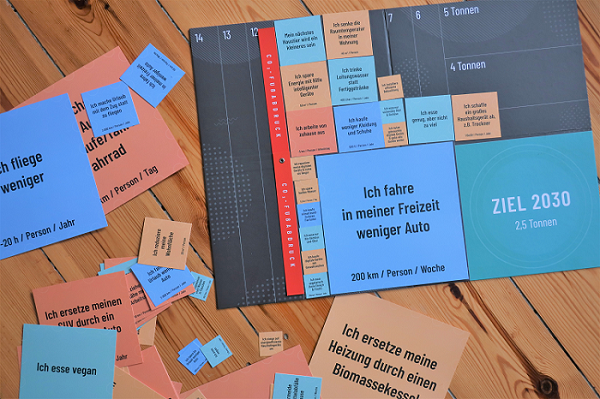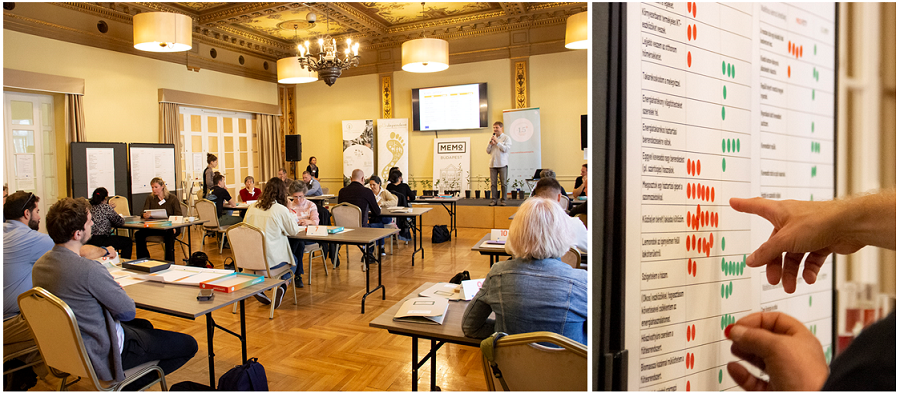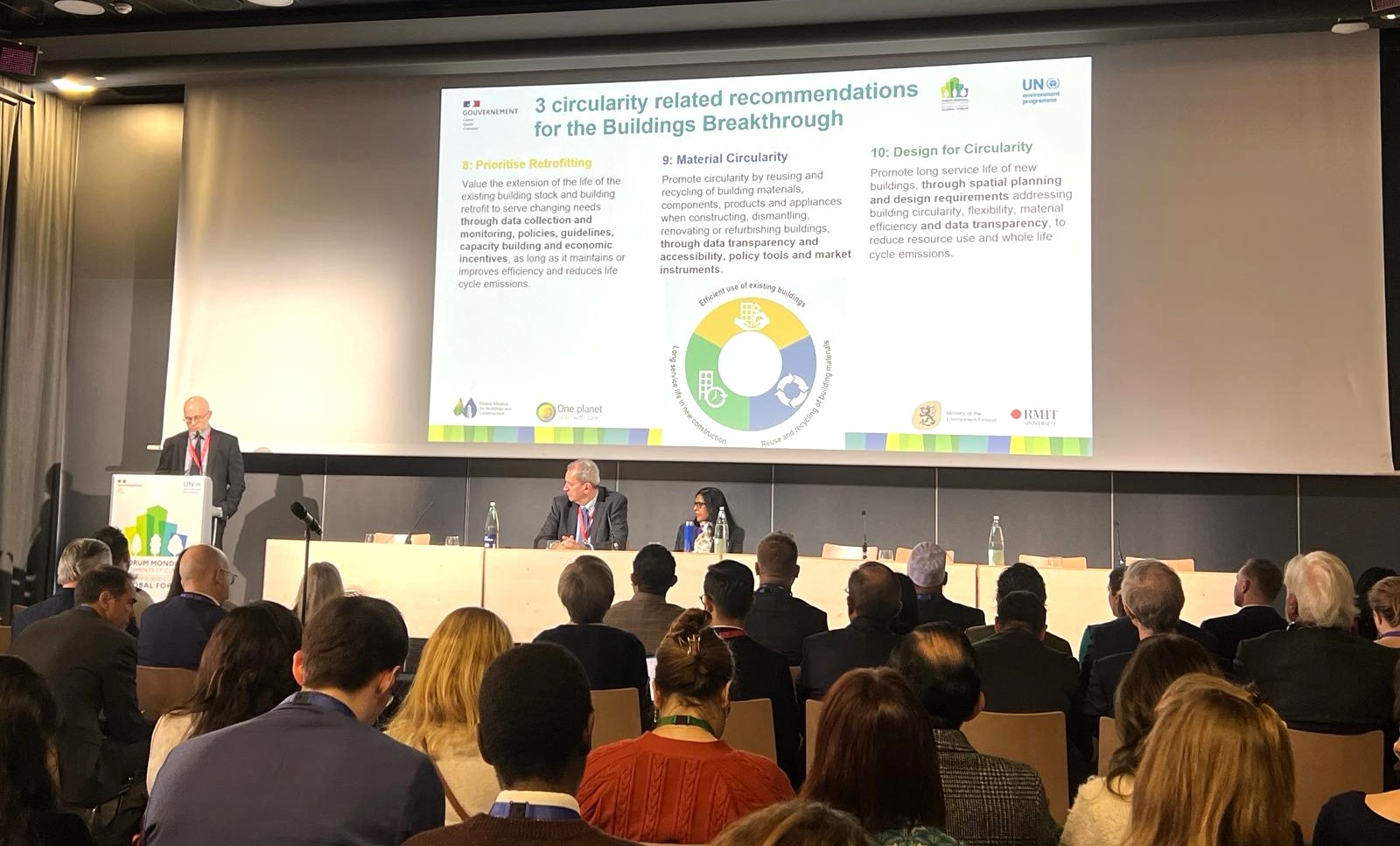How do we need to change, to align our lifestyles with the 1.5°C target?

Solutions for this question have become even more relevant given the political fallback regarding the climate goals of COP 27. Providing those is a crucial part of the EU 1.5°-Lifestyles Project. By conducting citizen thinking labs in five European countries, 50 possible options for changing one’s own lifestyle towards more sustainability have been examined: to what extent are they accepted by participants, which barriers (structural as well as personal) stand in their way and how could those be overcome?
Would you give up your car and switch to walking, cycling, or using public transport instead? Can you imagine putting on a second jumper at home instead of turning up the temperature, in winter? Would you take shorter and colder showers or eat fewer animal products - for the sake of the climate? In which areas of your life are you willing to change your behaviour and habits in order to reduce your personal footprint and counteract climate change?
These are only some of the questions that citizens in Germany, Hungary, Latvia, Sweden and Spain were asked for the EU 1.5° Lifestyles Project. They had to decide individually: Which questions do I want to answer with a "yes" and which with a "no"?
The project aims to mainstream lifestyles that are in line with the 1.5°C target of the Paris Agreement. For this purpose, it is important to find out what makes living such a lifestyle difficult or even impossible for citizens. The answers vary across countries because they depend on structural factors such as e.g. the country’s economy or laws. This is why the project involves researchers and country experts from Finland, Germany, Hungary, Latvia, the Netherlands, Spain and Sweden.
A climate puzzle to measure acceptance
One of the core elements of the project are the so-called Citizen Thinking Labs (CTLs), carried out in five different countries. In each CTL, 50 different low-carbon lifestyle options were discussed with 20 to 25 citizens. For this purpose, the climate puzzle, a board game developed by the project partner D-mat from Finland, was revised according to the needs of the research project and produced in five different national languages.
To prepare for the CTLs, we calculated more than 100 individual lifestyle carbon footprints of selected participants and used these as the starting point for the climate puzzle. Based on their current footprint, the players could then pick a puzzle piece for each lifestyle option they were willing to implement in order to ultimately reduce their footprints to 2.5t per capita per year by 2030 or to 0.7t per capita per year by 2050.

Climate Puzzle in German language - Source: adelphi ©
Each puzzle piece represents one of 50 low-carbon lifestyle options in the areas of housing, nutrition, mobility, leisure and more. The puzzle pieces vary in size according to their emissions reduction potential. The greater the potential of an option to reduce the personal carbon footprint, the larger the puzzle piece. A list of all lifestyle options and the methodology behind their selection can be found here.
The CTLs took place in autumn 2022. Across all countries, citizens showed great enthusiasm to engage with the puzzle and the project idea, and to reflect on sustainable lifestyles. Our research team collected important data and insights about the 50 options for sustainable living playfully.

Citizen Thinking Lab in Hungary - Source: GreenDependent Institute ©
Participants across countries shared their approval or rejection of a large set of lifestyle options. For example, the majority of participants from the labs in all countries were unwilling to fully switch to a vegan or vegetarian diet but indicated that they would be willing to reduce their consumption of animal products. Most also agreed that switching to efficient lighting and household appliances was worthwhile, but reducing their own living space or moving into shared flats was not acceptable to most of them.
However, the aim of the CTLs went beyond collecting data on acceptance or rejection rates of individual options among the participants. The research team also intended to learn more about the motivation of the participants to implement single options, as well as to gain insights into their individual attitudes and the determining factors, especially for those options that the participants said they did not want to implement. After the puzzle game, participants discussed in smaller groups under which conditions certain options would become acceptable to them.
Preliminary insights into the results
One interesting learning was, that the strong rejection of a vegan or vegetarian diet among many participants is partly because they simply do not know how to cook tasty dishes without animal products or how to prepare the available meat alternatives. Less surprising were the health concerns expressed by some participants. They had doubts about whether a vegetarian or vegan diet can provide all the nutrients needed.
For some options, structural barriers played a major role in acceptance. For example, several participants mentioned that the tense and competitive housing situation in larger cities makes it very difficult to find and move to a smaller flat or a place closer to work. Therefore, many participants wished for stricter regulation by decision makers (e.g. reduction of the bureaucratic effort when moving or a cap on rent increases when moving flats), but they also called for more innovative solutions, such as flat exchange platforms or using community space for cooking, relaxing, etc. to incentivise people to get by with fewer square meters.
The analysis of the collected data has only just begun. Stay tuned for further updates on our research process, new data and results, as well as on our next round of Citizen Thinking Labs: https://onepointfivelifestyles.eu/ and if you do have any questions on the project, feel free to reach out to Maren (tornow@adelphi.de) or Lena (domroese@adelphi.de).
And if you want to learn how you can make your everyday life more sustainable – check out the list of 50 lifestyle options and feel free to share it with interested friends, colleagues and family.



